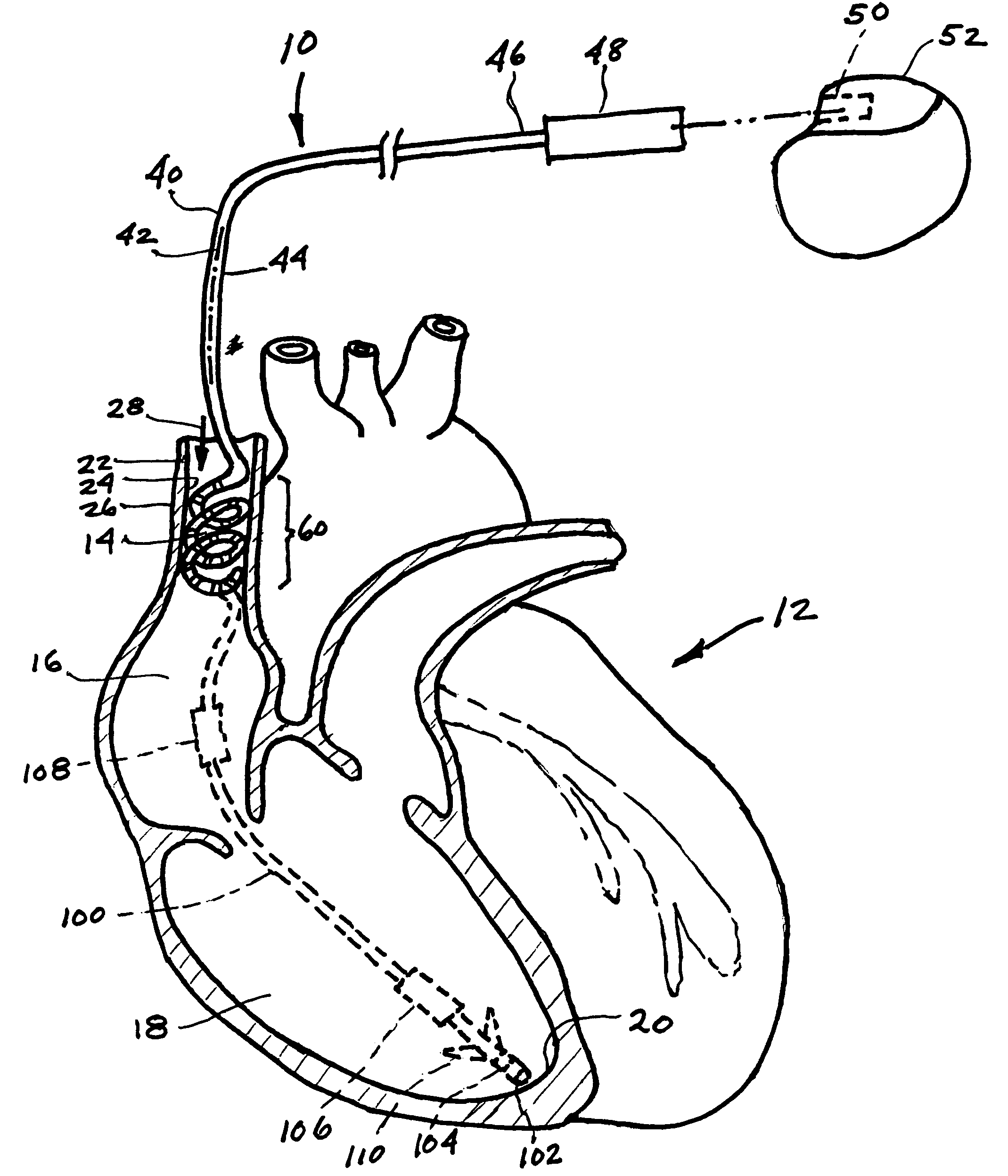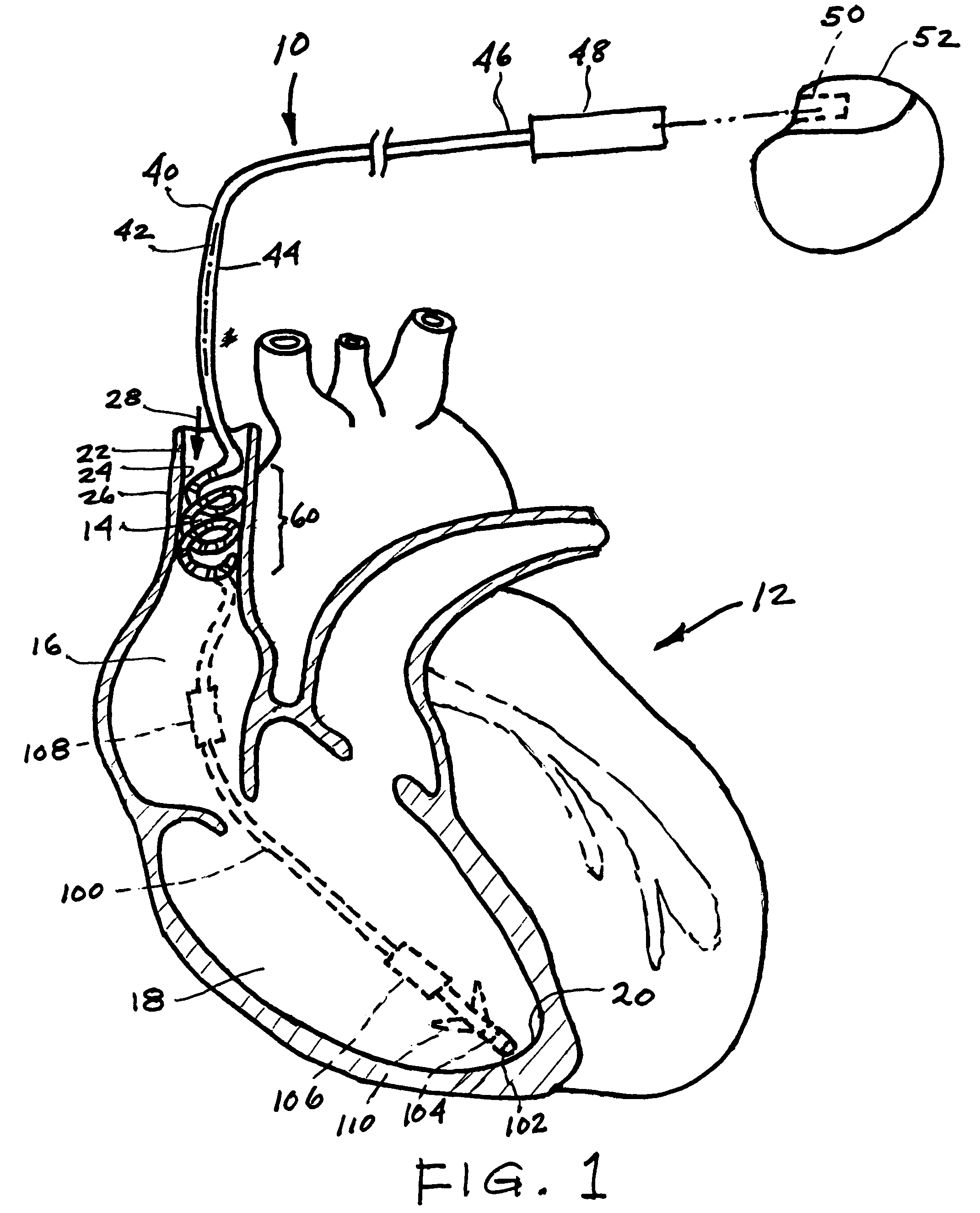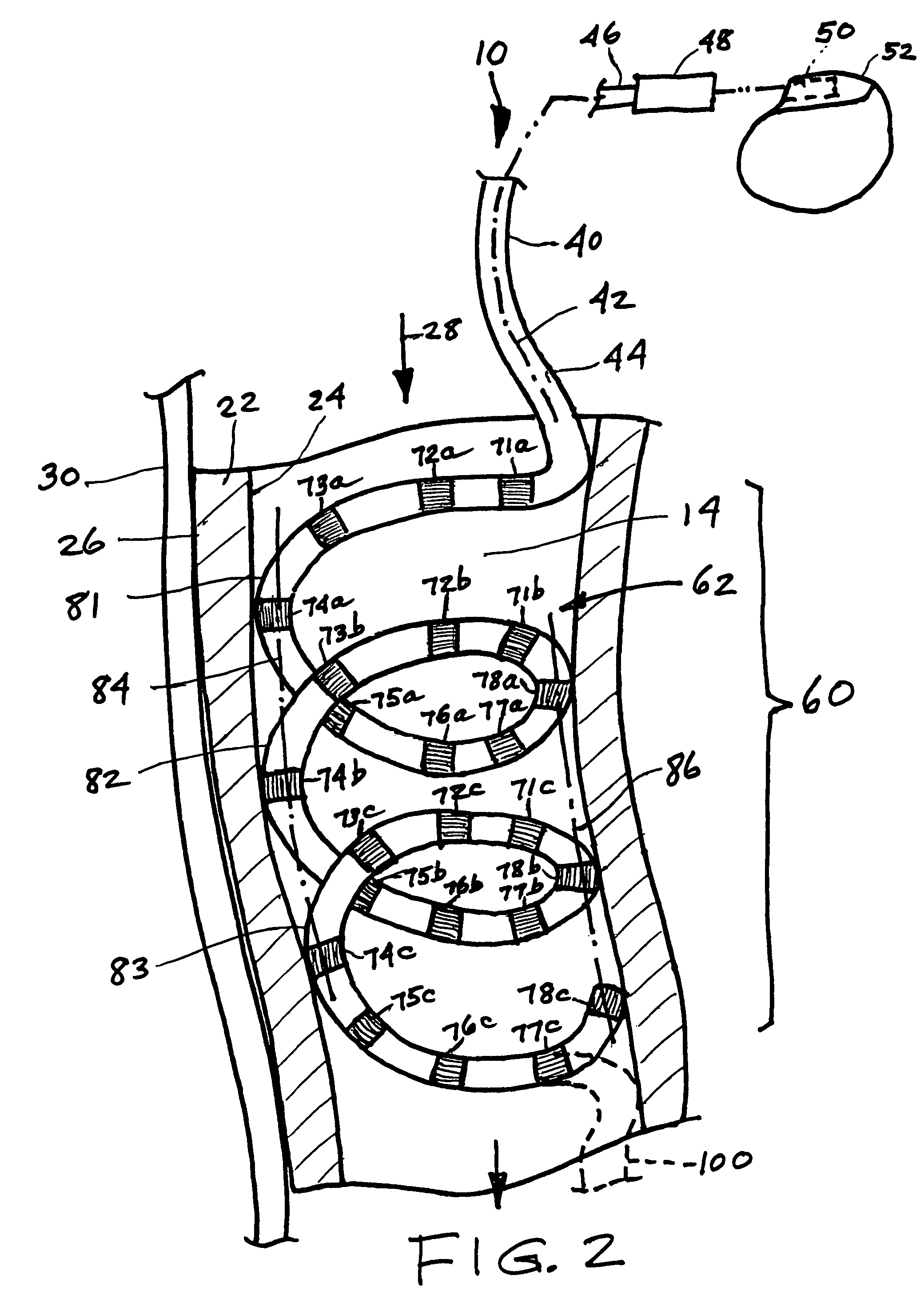Endovascular lead for chronic nerve stimulation
a technology of endovascular lead and chronic nerve stimulation, which is applied in the direction of transvascular endocardial electrode, internal electrode, therapy, etc., can solve the problems of increased activity and abnormal heart ra
- Summary
- Abstract
- Description
- Claims
- Application Information
AI Technical Summary
Benefits of technology
Problems solved by technology
Method used
Image
Examples
Embodiment Construction
[0015]The following description presents preferred embodiments of the invention representing the best mode contemplated for practicing the invention. This description is not to be taken in a limiting sense but is made merely for the purpose of describing the general principles of the invention whose scope is defined by the appended claims.
[0016]FIG. 1 shows in solid lines a passive fixation, dedicated nerve stimulation lead 10 for transvenously stimulating a parasympathetic nerve of a mammalian subject, in particular the vagus nerve and cardiovagal branches thereof in a human subject.
[0017]FIG. 1 further depicts, in diagrammatic form, the anterior portion of a human heart 12, specifically showing the superior vena cava (SVC) 14 within which a portion of the lead 10 is placed; the right atrium (RA) 16; the right ventricle (RV) 18; and the apex 20 of the RV. The SVC 14 comprises a vessel wall 22 having an inner surface 24 and an outer surface 26. An arrow 28 indicates the direction of...
PUM
 Login to View More
Login to View More Abstract
Description
Claims
Application Information
 Login to View More
Login to View More - R&D
- Intellectual Property
- Life Sciences
- Materials
- Tech Scout
- Unparalleled Data Quality
- Higher Quality Content
- 60% Fewer Hallucinations
Browse by: Latest US Patents, China's latest patents, Technical Efficacy Thesaurus, Application Domain, Technology Topic, Popular Technical Reports.
© 2025 PatSnap. All rights reserved.Legal|Privacy policy|Modern Slavery Act Transparency Statement|Sitemap|About US| Contact US: help@patsnap.com



